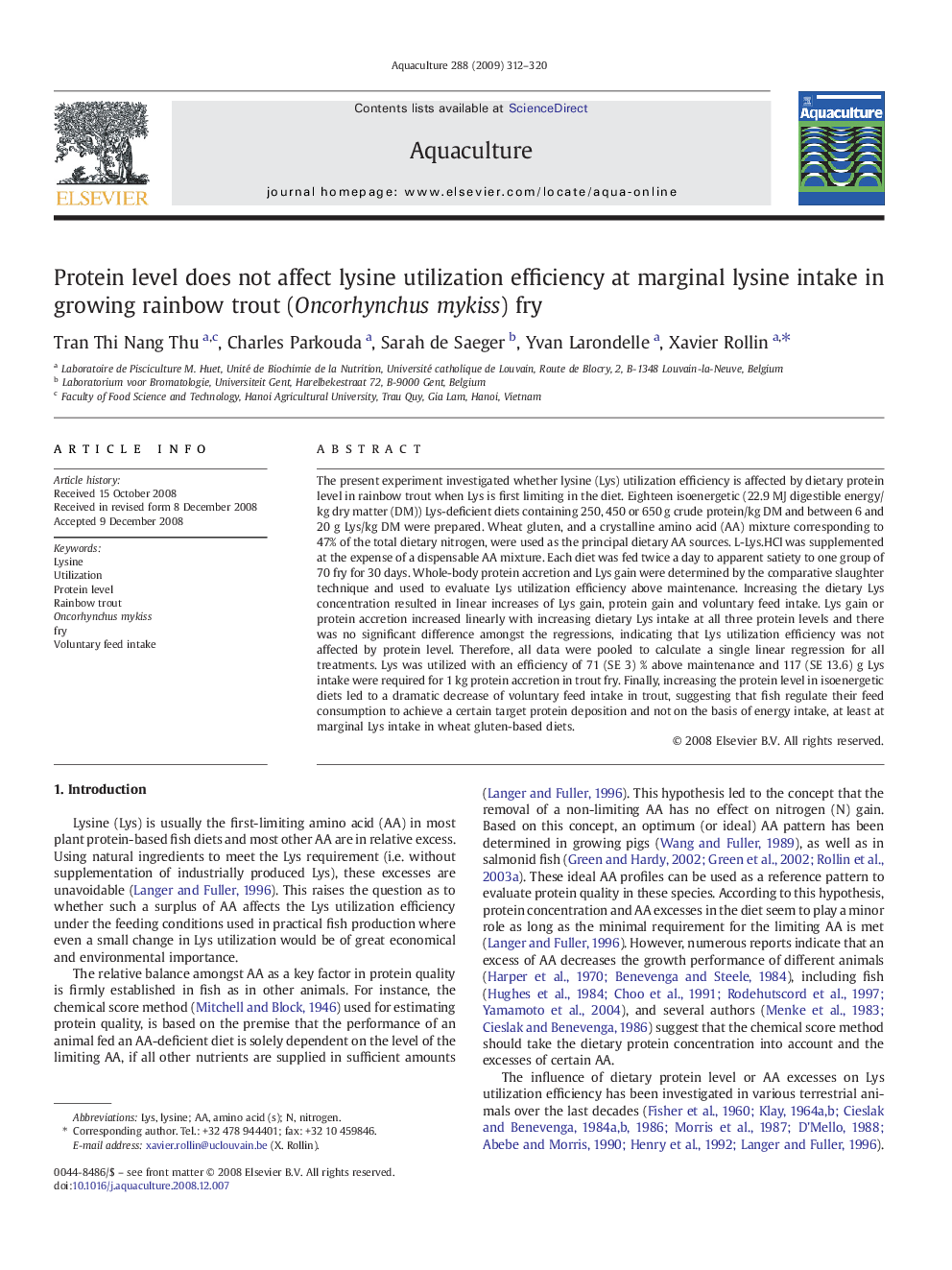| Article ID | Journal | Published Year | Pages | File Type |
|---|---|---|---|---|
| 8496174 | Aquaculture | 2009 | 9 Pages |
Abstract
The present experiment investigated whether lysine (Lys) utilization efficiency is affected by dietary protein level in rainbow trout when Lys is first limiting in the diet. Eighteen isoenergetic (22.9Â MJ digestible energy/kg dry matter (DM)) Lys-deficient diets containing 250, 450 or 650Â g crude protein/kg DM and between 6 and 20Â g Lys/kg DM were prepared. Wheat gluten, and a crystalline amino acid (AA) mixture corresponding to 47% of the total dietary nitrogen, were used as the principal dietary AA sources. L-Lys.HCl was supplemented at the expense of a dispensable AA mixture. Each diet was fed twice a day to apparent satiety to one group of 70 fry for 30Â days. Whole-body protein accretion and Lys gain were determined by the comparative slaughter technique and used to evaluate Lys utilization efficiency above maintenance. Increasing the dietary Lys concentration resulted in linear increases of Lys gain, protein gain and voluntary feed intake. Lys gain or protein accretion increased linearly with increasing dietary Lys intake at all three protein levels and there was no significant difference amongst the regressions, indicating that Lys utilization efficiency was not affected by protein level. Therefore, all data were pooled to calculate a single linear regression for all treatments. Lys was utilized with an efficiency of 71 (SE 3) % above maintenance and 117 (SE 13.6) g Lys intake were required for 1Â kg protein accretion in trout fry. Finally, increasing the protein level in isoenergetic diets led to a dramatic decrease of voluntary feed intake in trout, suggesting that fish regulate their feed consumption to achieve a certain target protein deposition and not on the basis of energy intake, at least at marginal Lys intake in wheat gluten-based diets.
Keywords
Related Topics
Life Sciences
Agricultural and Biological Sciences
Aquatic Science
Authors
Tran Thi Nang Thu, Charles Parkouda, Sarah de Saeger, Yvan Larondelle, Xavier Rollin,
